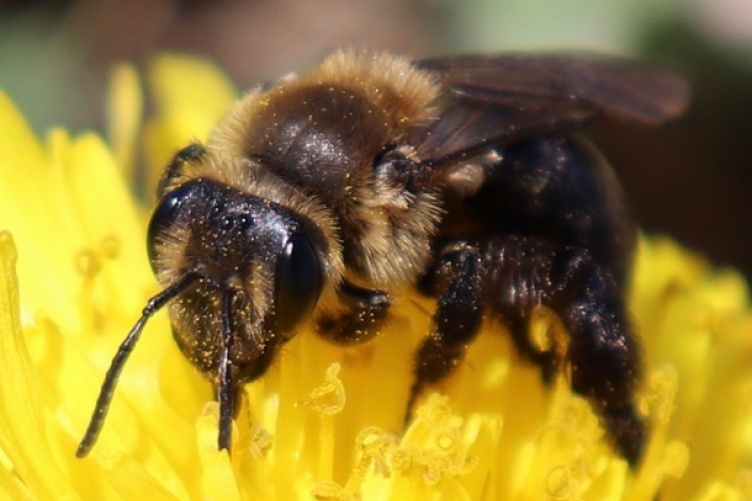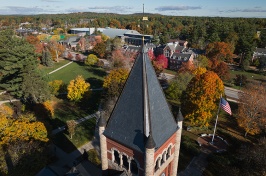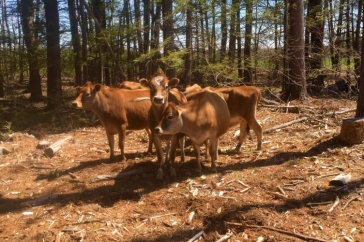
The ground nesting bee Andrena vicinia, one of 14 declining wild bee species identified by UNH researchers. Photo Credit: Molly Jacobson
New research from UNH has found a dramatic decline in 14 wild bee species that are, among other things, important across the Northeast for the pollination of major local crops like apples, blueberries and cranberries.
“We know that wild bees are greatly at risk and not doing well worldwide,” says Sandra Rehan, assistant professor of biological sciences. “This status assessment of wild bees shines a light on the exact species in decline, besides the well-documented bumble bees. Because these species are major players in crop pollination, it raises concerns about compromising the production of key crops and the food supply in general.”
“Because these species are major players in crop pollination, it raises concerns about compromising the production of key crops and the food supply in general.”
Rehan was a co-author with graduate student Minna Matthiasson ‘18G of the study, recently published in the journal Insect and Conservation Diversity. The researchers used local museum records to compare changes in the wild bee community in New Hampshire over the span of 125 years from 1891 to 2016. They looked at characteristics such as habitat preferences, range, elevation and latitude as well as social behavior.
All 14 of the species found to be in decline are native to New England but are widespread and important across the Northeast and North America. Out of those declining species, 13 are ground nesters and one is a cavity nester. Researchers also found that most of the declining species experienced significant shifts in both elevation and latitude, pointing to a climate change effect.
If you build it, will they come? Sandra Rehan shows us her "bee hotel" and explains its role in attracting native pollinators.
“We found that wild bee species that once greatly populated more southern areas near sea level are now in decline,” says Rehan. “While up north in more mountainous areas, like the White Mountains, those same species persist, which is an indicator of how climate change is affecting certain populations, especially in the Seacoast area.”
Of the bee species found to be in decline, 50 percent showed a shift to being more abundant in northern areas and in higher elevations. However, one-third of the eight wild bee species that seemed to be on the increase also showed a northward migration over the 125-year period. Researchers say that if climate change continues as predicted, monitoring the habitat shifts in these wild bees will be important to help with appropriate landscape management, crop production and conservation policies.
Funding for this research was provided by New Hampshire Agricultural Experiment Station, USDA National Institute of Food and Agriculture Hatch Project and the Foundation for Food and Agriculture Research Pollinator Health Fund.
-
Written By:
Robbin Ray ’82 | UNH Marketing | robbin.ray@unh.edu | 603-862-4864

















































